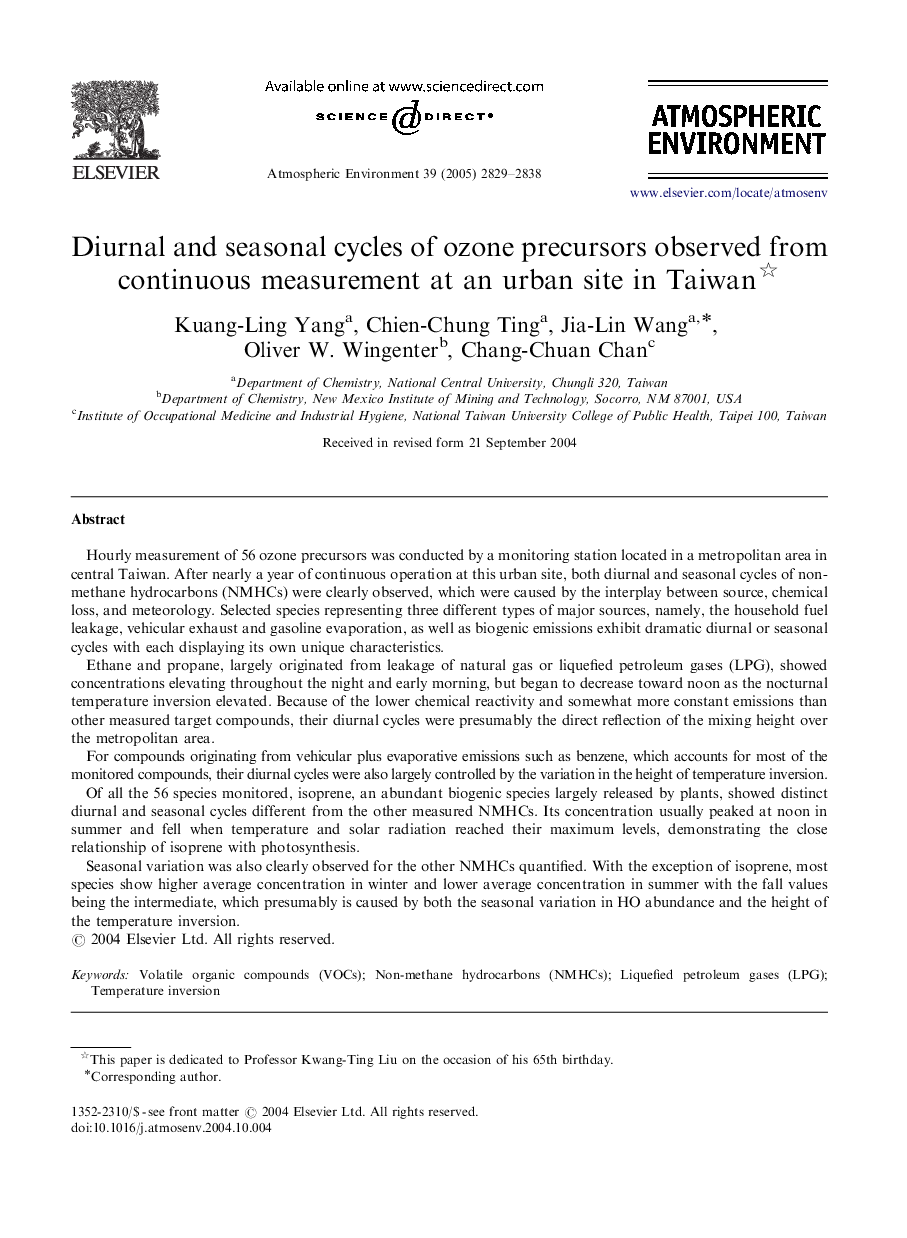| Article ID | Journal | Published Year | Pages | File Type |
|---|---|---|---|---|
| 4445261 | Atmospheric Environment | 2005 | 10 Pages |
Hourly measurement of 56 ozone precursors was conducted by a monitoring station located in a metropolitan area in central Taiwan. After nearly a year of continuous operation at this urban site, both diurnal and seasonal cycles of non-methane hydrocarbons (NMHCs) were clearly observed, which were caused by the interplay between source, chemical loss, and meteorology. Selected species representing three different types of major sources, namely, the household fuel leakage, vehicular exhaust and gasoline evaporation, as well as biogenic emissions exhibit dramatic diurnal or seasonal cycles with each displaying its own unique characteristics.Ethane and propane, largely originated from leakage of natural gas or liquefied petroleum gases (LPG), showed concentrations elevating throughout the night and early morning, but began to decrease toward noon as the nocturnal temperature inversion elevated. Because of the lower chemical reactivity and somewhat more constant emissions than other measured target compounds, their diurnal cycles were presumably the direct reflection of the mixing height over the metropolitan area.For compounds originating from vehicular plus evaporative emissions such as benzene, which accounts for most of the monitored compounds, their diurnal cycles were also largely controlled by the variation in the height of temperature inversion.Of all the 56 species monitored, isoprene, an abundant biogenic species largely released by plants, showed distinct diurnal and seasonal cycles different from the other measured NMHCs. Its concentration usually peaked at noon in summer and fell when temperature and solar radiation reached their maximum levels, demonstrating the close relationship of isoprene with photosynthesis.Seasonal variation was also clearly observed for the other NMHCs quantified. With the exception of isoprene, most species show higher average concentration in winter and lower average concentration in summer with the fall values being the intermediate, which presumably is caused by both the seasonal variation in HO abundance and the height of the temperature inversion.
